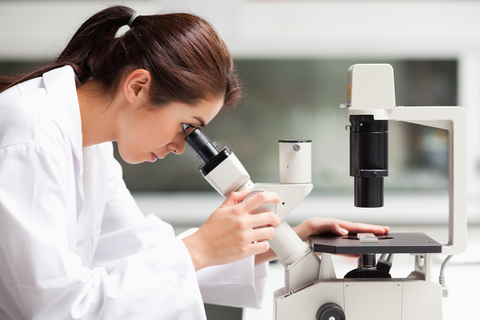University of Bath discovery may help combat chronic inflammation

Researchers from the University of Bath’s Department of Pharmacy & Pharmacology have made an important discovery that might lead to novel therapies to combat chronic inflammation (University of Bath, 2017).
The work, jointly funded by the Biotechnology and Biological Sciences Research Council (BBSRC) and Wellcome Trust, and published in the Journal of Immunology, focuses on danger signals such as reactive oxygen species that are released by damaged or dying cells during wounding or infection, and their impact on the subsequent immune response.
The research team, led by Professor Steve Ward from the University of Bath and Professor Will Wood from the University of Bristol, studied the effect of hydrogen peroxide, one of the danger signals, on the movement of T lymphocytes which orchestrate the immune response to infection and wound healing.
Hydrogen peroxide is an early danger cue that is already known to be required for other immune cells to migrate to wounds, where these cells provide the first line of defence to damage or infection.
By taking T lymphocytes from healthy human volunteers, the team explored the ability of the T lymphocytes to migrate and respond to inflammatory stimuli in the presence of hydrogen peroxide and other reactive oxygen species. Their work revealed that, in contrast to the effects on other immune cells, reactive oxygen species actually suppress the movement of T lymphocytes toward pro-inflammatory stimuli.
Lead author Dr Jennifer Ball, from the University of Bath, said “Biologically, T cells are required later in the immune response process as they provide a specific and long-lasting protection. Our research indicates that hydrogen peroxide could be a key regulator in co-ordinating the recruitment of immune cells in the order of their biological importance. We propose that once recruited by other inflammatory signals, the T cells are then immobilized by hydrogen peroxide and therefore restricted to the inflamed sites, this facilitating the resolution of inflammation. In a pathological setting however, high levels of reactive oxygen species could cause widespread suppression of T lymphocyte migration and prolong chronic infection or delay resolution of inflammation or wound healing.”
The team also provided some insight into the molecular processes by which hydrogen peroxide might impair the the movement of T lymphocytes. Hydrogen peroxide was able to activate a molecule called SHIP-1, a key negative regulatory protein which suppresses a major activating signalling pathway linked to facilitating cell movement. This effect on SHIP-1 could also be mimicked by novel pharmacological tools that activate SHIP-1, underlining the potential therapeutic opportunities of targeting SHIP-1 in T cell-driven pathologies including cancer, autoimmune disease and allergies.








